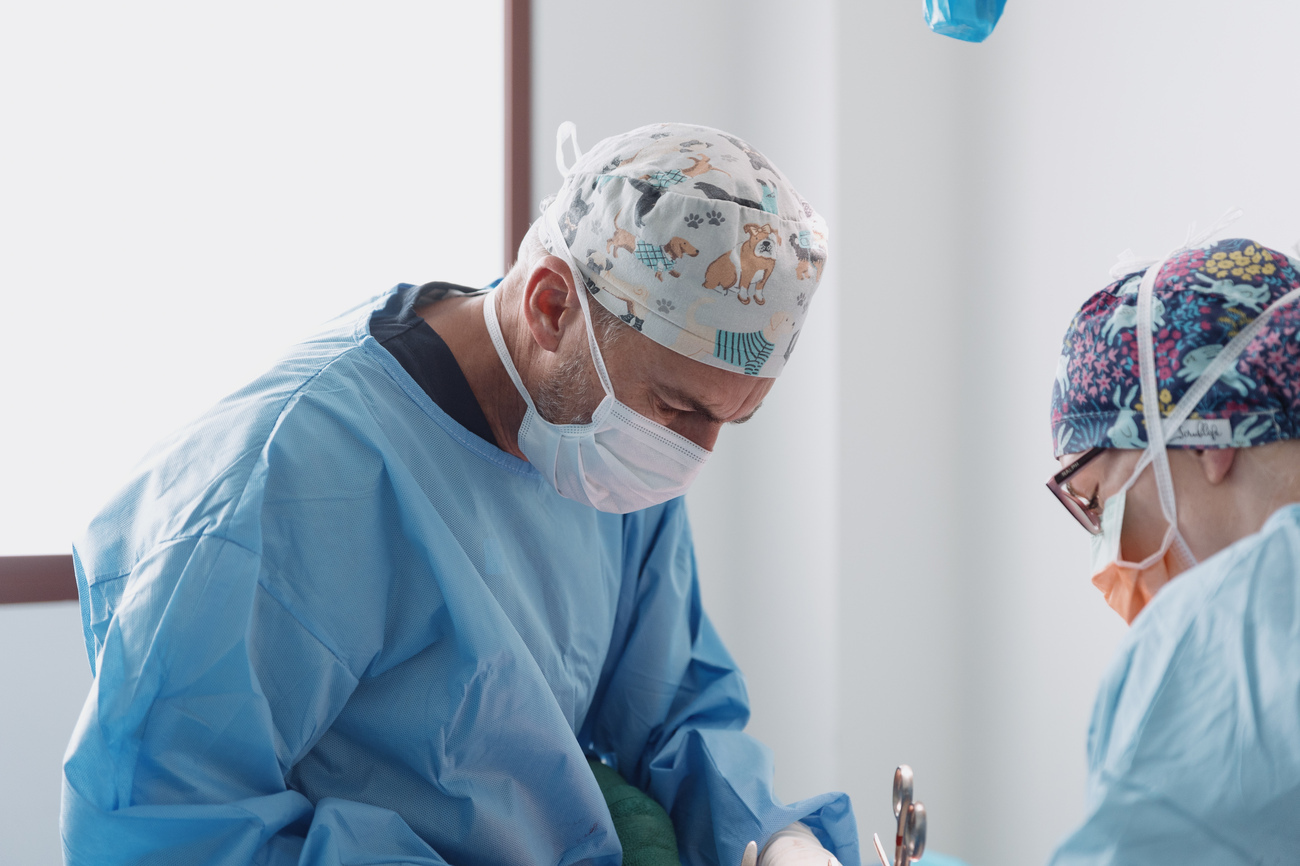
|
|
Understand Anaesthetics for Pets
|
| |
We know lots of owners feel anxious about their pets having a general anaesthetic, especially as they get older. However, many times they are necessary to provide diagnostics or treatments for conditions that will only worsen if not addressed. So how do WE go about making an anaesthetic as safe as possible for your pets?
There is a lot involved in the ever-advancing world of anesthesia in veterinary medicine. General anesthetics for small animals have evolved quite a lot even in the last 10 years, even more so in the time that our esteemed boss-man and vet extraordinaire, Dr Stephen Crouch, has been practicing.
The difficult thing for owners is that all veterinary clinics have a choice in how they perform and monitor anaesthesia and they are not all created equal. That is why we like to educate people on how we manage our procedures to ensure the lowest risk to your pet.
What are the stages of a general anaesthetic?
1. Placing intravenous catheter/cannula
• A leg will be clipped.
• The catheter is placed through the skin into the vein.
• This provides “IV” or intravenous access for medication and fluid therapy.
• The catheter is bandaged in securely.
2. Pre-anaesthetic blood testing
• Bloods are taken for most patients coming for surgery
• A panel of tests are done to check for any anaemia, changes in protein levels, changes to glucose, liver or kidney function.
• This allows us to identify any issues that might put the patient at risk.
• It may lead to changes in the anaesthetic protocol, changing the procedure, or in severe cases, aborting the procedure if it is not deemed safe at that time.
3. Pre-medications
• The “Pre-Med” is the sedation part of the procedure.
• In some patients this part may happen before blood testing if they are too anxious for the catheter.
• It will include 2-4 medications including; anti-anxiety medication orally and pain-relief/sedative (opioid) +/- additional sedatives or muscle relaxants.
• Significantly, it reduces the amount of anaesthetic agents required and thereby increasing safety.
4. Induction of anaesthesia.
• The “induction” is where the patient becomes fully unconscious for the procedure and is done using injectable medication into their vein.
• Once this has occurred the patient will be intubated (placing a tube into the windpipe) and provided with oxygen.
5. Maintenance of anaesthesia
• To keep the patients asleep we use an anaesthetic gas most of the time.
• This is given with the oxygen via the tube in the airway.
• A second drip line will then give a constant infusion of particular pain-killers that again lower the amount of inhaled anaesthetic agent required, also further improving safety.
• When the patient’s procedure is done the gas is turned off and the patient receives only oxygen until they are waking up and can have the tube removed from their airway.
Making it safe:
Patient assessment.
We never embark on an anesthetic without having seen the patient, giving a full health check and then making note of risk factors that could affect anaesthetic safety.
Breed risk
Some breeds have quirks of anatomy or genetics that can affect anaesthetics. For example, brachycephalic (flat-faced) breeds are a higher risk of vomiting, so we give an anti-vomiting injection as part of the medications we give ahead of the procedure. Another example is collie breeds, who can carry a gene that makes them more sensitive to some medications- we simply avoid those medications in at risk-breeds.
Patient Health
We always take the patient’s health and other medical conditions into account. Clinical conditions such as heart murmurs or diseases such as diabetes or chronic renal disease are taken into account when tailoring the plan for anaesthesia.
This may affect medication choices, blood testing we do prior to and during the procedure, and even WHEN in the day we perform the procedure or instructions we give the owner prior to the day (for example diabetics often are told not to give insulin the morning of a procedure due to fasting).
Medication choices
As hinted above we tailor our medications to the patient. While we have combinations of medications to sedate the patients and induce anaesthesia, make sure we only use what is suitable for individual patients.
Things that are very important to good anesthetics include;
• Anti-anxiety medication (sometimes given at home) to reduce stress which in turn makes for smoother anaesthetics and (interestingly- reduced pain!)
• Pain-relief to allow us to lower the level of the gas needed to keep the patient asleep
• Additional sedative or pain reliefs to reduce level of gas required to keep patients asleep which are chosen depending on patients health, age and anxiety levels, as well as how painful the procedure is expected to be.
Monitoring and supportive care
Monitoring options for our small animal patients has improved dramatically in recent years. We not only monitor things such as heart rate and breathing rate, but a host of other parameters in EVERY anaesthetic.
To ensure we are giving enough oxygen and that the patient is breathing properly we monitor the oxygen saturation of the blood and how much cardon dioxide is being breathed out from the lungs.
To ensure that we do not have patients too deeply anesthetised, and more importantly that they have adequate delivery of oxygenated blood to essential tissues, we monitor blood pressure closely. We also use an ECG to monitor for any signs of cardiac arrhythmias that might exist or develop.
Of course we also monitor temperature and physically assess the patients constantly by checking jaw tone, eye position, and manual chest auscultation with the stethoscope -in other words a nurse is standing by monitoring the patient the entire anaesthetic.
Interventions
We use a lot of techniques to make anesthetics safer in each procedure but also have interventions we can use if there are changes to parameters on the anesthetics.
Fluid therapy is used in every single anaesthetic. We use this as a way to ensure patients remain hydrated, have good blood pressure, as well as delivering additional pain relief medications for more painful procedures.
Active warming is important too to keep core body temperatures in a normal range- we have special warm water heat mats under all patients when anaesthetized. We use Jackets and jumpers after sedation to conserve body heat, blankets during the procedure. Socks and bubble wrap are often used to keep the feet warm too! We even have some fancy warm air blankets call “Bair Huggers” which we use during and after procedures to warm patients up.
Medications for slightly low blood pressures or heart rates can be given if needed. We do not charge extra for this- it is simply a part of how we manage our patients safely. Rather than risk prolonged changes to blood pressure or heart rate we will intervene to ensure the anaesthetic continues safely. This is done only after assessing that the patient is safe to otherwise continue and has no lasting effects after the anaesthetic.
Ofcourse, the biggest intervention, if we feel that an anaesthetic is not proceeding safely we will stop the procedure and wake the patient up. We prioritize your pet’s safety at all times.
Education
We pride ourselves, here at Gawler Animal Hospital, on ongoing learning and commitment to providing the best standards of care. This means constantly educating ourselves as veterinarians, and passing that knowledge on to all staff.
As vets, we are always learning and seeking the newest information and most up to date recommendations for anaesthetic safety, monitoring and medication choices. We have regular training with all nurses and veterinary technicians on anaesthetic safety, changes to how we manage/monitor anaesthetics, updates on clinic protocols and how to respond in an emergency.
I hope this information helps you to understand what is involved in a general anaesthetic, as well as the many ways that we tailor anaesthetics to an individual patient and monitor them. There is no way to fully remove risk from anaesthetics but we strive to identify and reduce risk as much as possible. If you ever have questions about anaesthetics or procedures we are always happy to answer them, don’t hesitate to ask us!
Dr Michelle
|
|
|

|
|
What is pet resuscitation?
|
| |
If your pet ever suffers a serious illness or injury, you may have to consent to veterinary resuscitation procedures being performed on them. This can understandably feel overwhelming, particularly during an already stressful and upsetting situation.
We’d therefore like to discuss what pet resuscitation actually involves in the hope that, should you ever be in such a situation with your pet, you can feel more informed and comfortable to quickly make the best decisions for your pet and your family.
What is resuscitation?
Pet resuscitation can involve a variety of medical interventions, which may be performed separately or in combination, depending on the condition of that pet.
The first step of resuscitation is always a rapid assessment of the pet to assess its most basic functions: airway, breathing, and circulatory (blood flow) status.
Depending on the pet’s condition, we may then recommend:
- Fluid resuscitation: this involves the rapid administration of calculated amounts of medical fluids into your pet’s vein, to help boost their blood volume and circulatory flow
- Basic life support: this involves ensuring your pet’s main airway is clear (which may involve the placement of a breathing tube), and assistance with their circulation and breathing through chest compressions and manual ventilation (giving them breaths, usually via an anaesthetic machine and fresh oxygen flow)
- Advanced life support: this involves more advanced measures such as administering adrenalin into your pet’s vein (which can help to stimulate their heart and lung function) and monitoring their heart rhythm with an ECG machine
What can you do to help?
Whilst it’s a distressing scenario to have to consider, it really helps if you (and your family, if relevant) have previously discussed and agreed on how much medical intervention you would like your pet to receive in an emergency.
If you are unsure or would like more information on pet emergency care, please have a chat with our compassionate team. |
|
|
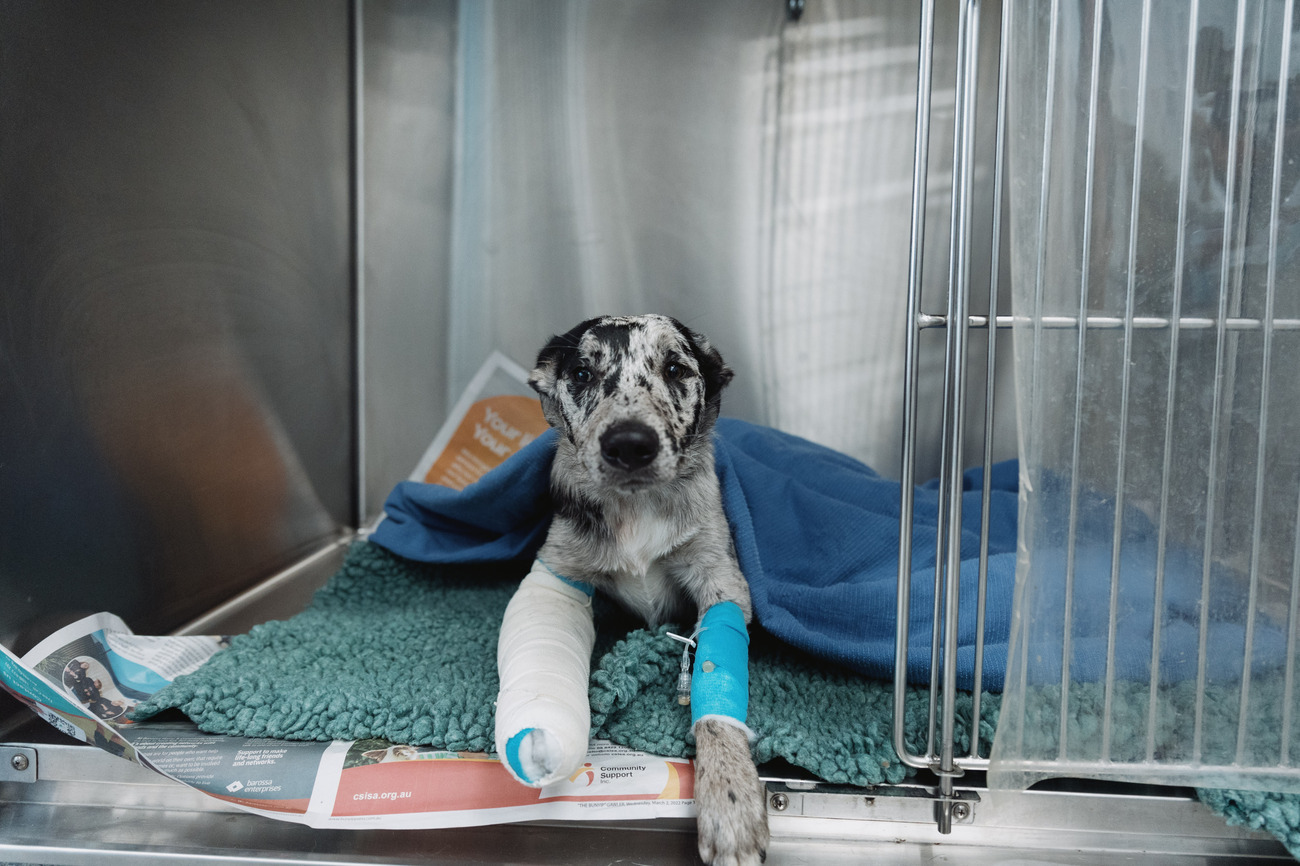
|
|
That’s a wrap on bandaging support
|
| |
If applied incorrectly, bandages can actually cause harm to your pet. Here are our team’s top tips on how to apply a safe and effective dressing.
When might a bandage be required for your pet?
In general, it’s best to bring your pet to the clinic for a prompt veterinary assessment of any significant injuries, rather than trying to manage them yourself. This is especially necessary if your pet has any steady bleeding, appears to have a broken limb, or is showing symptoms of pain or lethargy.
However, if your pet has a wound but otherwise seems OK and you can’t bring them in to see us for more than a couple of hours, applying a light protective dressing can help prevent wound contamination.
What supplies might you need?
If you want to prepare a home bandaging kit for your pet, we’d recommend purchasing the following supplies from a human pharmacy:
- Sterile, non-stick, absorptive wound pads (such as Allevyn)
- A few rolls of crepe bandage (for gentle to moderate compression)
- A few rolls of conforming bandage (for stronger support of high-motion areas)
- Adhesive bandage tape
- Bottles of sterile saline
- Sterile cotton swabs
How should a bandage be applied?
Firstly, if your pet will let you, gently flush wounds clean with sterile saline, pat the area around the wound and dry with a sterile cotton swab.
Then place a sterile wound pad against the site and apply an appropriate bandage over the top for extra support, with tape to secure it. Here is a video demonstrating the application of a paw bandage (using alternate materials).
What are some common bandaging mistakes to avoid?
Avoid:
- Applying bandages too tightly – you should be able to fit at least one finger underneath limb bandages
- Allowing bandages to get wet or dirty, which can trigger infection of the wound or surrounding skin
For more tips on bandaging like a boss, consult our first aid proficient team. |
|
|
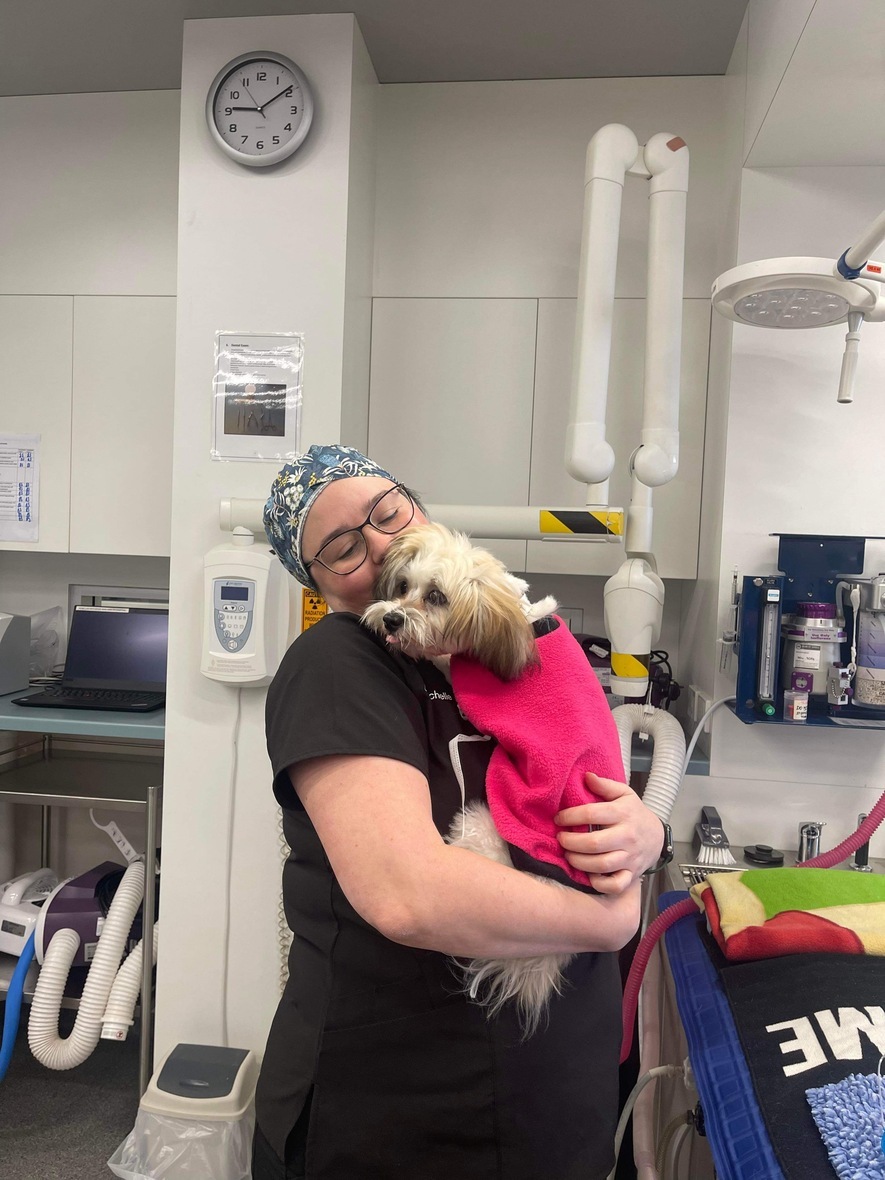
|
|
The dont's of desexing
|
| |
Whilst we often consider desexing operations to be “routine” in pets, it’s important to remember that they are still a surgical procedure (and a particularly significant one in the case of female pets!), and potentially serious complications can sometimes occur.
Whilst we always do our best to minimise the chances of surgical or anaesthetic issues while your pet is in the hospital, it’s just as vital that you stick to the recommended aftercare instructions to help ensure your pet has a smooth recovery.
Here are two of the most common post-desexing complications, and how you can help to prevent them:
1. Wound infection
Desexing wound infections are uncommon but are much more likely to occur if your pet has been allowed to lick at their operation site.
Ensure that your pet does not lick its wound by consistently using an Elizabethan (bucket) collar, a properly fitted inflatable collar, or (in the case of female cats) a snugly fitting body suit.
If you notice any increased redness or discharge from your pet’s wound, bringing them back for a check as promptly as possible is essential.
2. Excessive wound swelling and/or pain
Imagine if we had a major abdominal or “downstairs” surgery and then went running a few days later? We’d likely experience significant pain and swelling, and our unhealed wound could even rip open (ouch!).
It’s important to keep your pet confined and rested (except for short, on-lead toileting walks in the case of dogs) for 10-14 days post-operatively to help their wound heal as smoothly and comfortably as possible. If your pet is very active, ask us about post-operative sedation options.
If you notice any significant swelling, lumpiness, or other changes at your pet’s surgical site, it’s best to bring them back as promptly as possible for a recheck with our experienced team.
As they say, a stitch in time saves nine! |
|
|
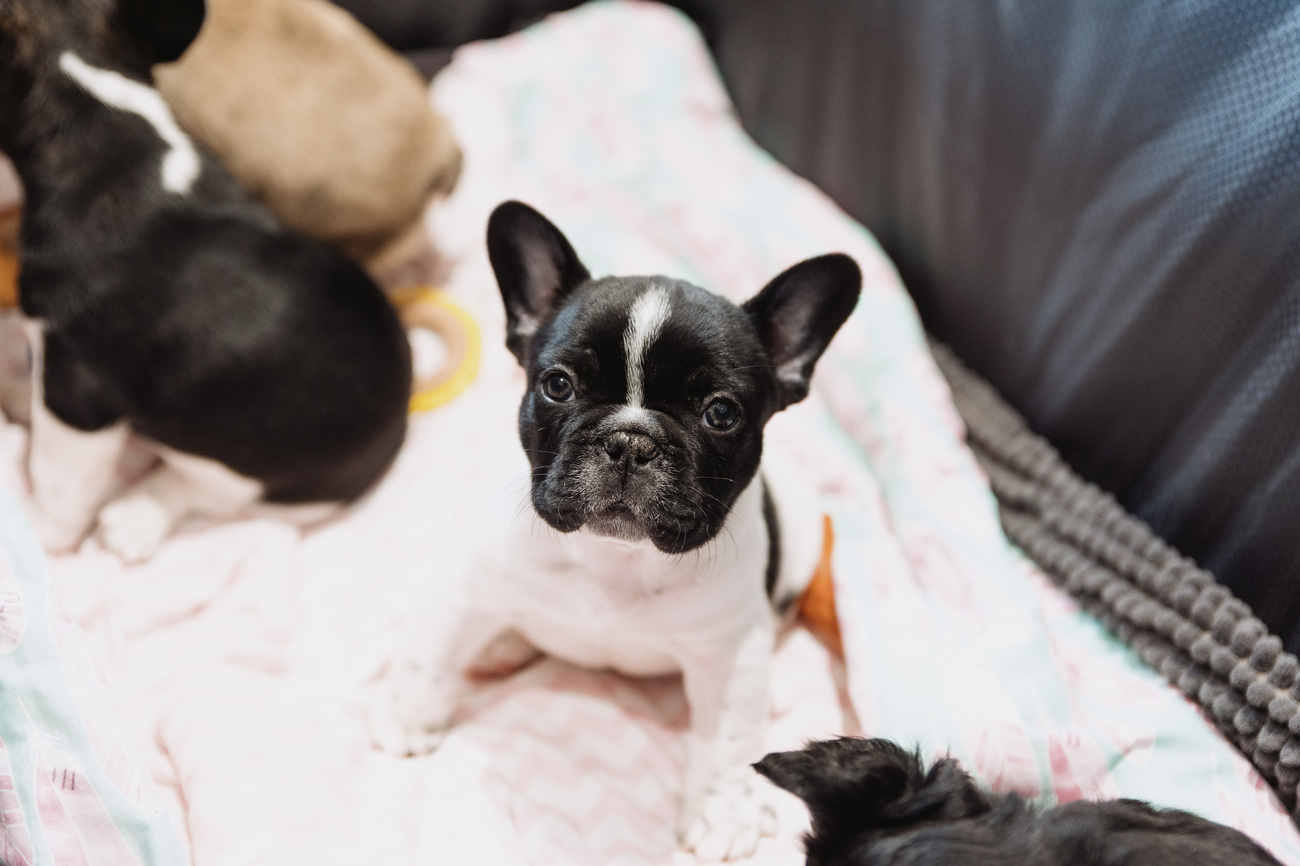
|
|
Animal News In Brief
|
| |
Amazon's Sydney office unveils dog playground
With 69% of Aussie dog owners saying they want to bring their pets to the office, Amazon Australia has unveiled a dog playground at its Sydney office, responding to the desires of its pet-owning employees. Designed to enhance the work-life balance, this innovative space underlines Amazon's commitment to creating a pet-friendly environment. Georgia Mitchell, Amazon Australia's senior manager of Workplace Experience, emphasises, "Dogs at work have positive impacts on productivity, innovation, and collaboration, all of which we are focused on enhancing through the workplace experiences we create." The initiative has received positive feedback from local officials, recognising the mental and physical health benefits of integrating pets into everyday environments.
Click here to read the full story on Amazon Australia.
Photo Credit: Amazon Australia
Private dog parks: a new suburban side hustle
Homeowners are renting out their backyards as private dog parks, a creative way to earn extra income. Leasa Gill, who initiated this in Queensland, saw it as an opportunity to provide a safe play space for dogs, addressing the concerns of dog owners like Samantha Leach. Leach finds the private park perfect for her sensitive kelpie, Jack, avoiding the stress of public dog parks. "He just gets to be himself," Leach says, appreciating the private, stress-free environment. However, Bond University’s Tammy Johnson cautions about the legalities and insurance issues involved, emphasising the importance of understanding the potential risks before diving into this venture.
Click here to read the full story at ABC News.
Fascinating insights into Australian cat ownership
Recent research showed that Australia's love for cats is evident, with recent statistics showing 33% of households have at least one cat, totalling an estimated 5.3 million pet cats nationwide. "Pets have positively impacted 85% of Australian lives," highlighting the important role cats play in many households. The research also sheds light on the impact of the COVID-19 pandemic on pet ownership, with a notable increase in cat adoptions. However, the presence of feral cats remains a significant environmental concern, with these animals contributing to the extinction of 22 native mammal species. The statistics provide a comprehensive look into the complexities of cat ownership in Australia.
Click here to see more interesting Australian cat ownership insights at Catster. |
|
|
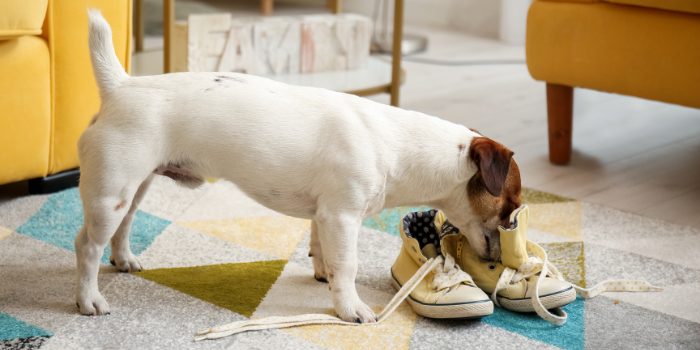
|
|
What did you just eat?! Essential actions for pets' unplanned snacks
|
| |
If your pet has just been caught "red-pawed" raiding the bin, pantry, shed, or medicine cabinet, it's important to act quickly to help reduce potential harm.
Here's what to do and what not to do if your pet has eaten something silly.
What to do:
1. Be aware of the more common household dangers
Common household toxins for pets include:
- Food items such as chocolate, cacao, raisins, grapes, onions, garlic, and foods containing xylitol sweeteners
- Rotting garbage
- Toxic plants such as lilies or sago palm
- Some essential oils (particularly undiluted), such as tea tree oil
- Human medications such as paracetamol, ibuprofen, and anti-depressants
- Chemicals such as rat bait, snail bait, weedkiller, and cleaning products
- Small objects such as batteries
2. Detective work
Quickly try to ascertain exactly what your pet has eaten. This involves confirming what substances they might have eaten (get a brand name and/or active ingredient if you can) and the approximate quantity.
3. Seek veterinary advice
As soon as possible, phone our experienced team to ask for advice. If you can't reach us, you can also seek advice from the Animal Poisons Helpline.
Even if you're not sure whether what your pet consumed is likely to be harmful or not, it's always safest to check.
What not to do
1. Watch and wait without veterinary advice
Prompt veterinary treatment can mean the difference between a near miss and a fatal poisoning for your pet.
If your pet has ingested a toxin within the last 1-4 hours, we may be able to induce vomiting to clear their system of the toxin. In other cases, we can administer appropriate antidotes or supportive therapy to minimise their symptoms.
2. Try to treat your pet yourself
Don't be tempted to try home remedies from Google. Unfortunately, we have seen pets present unwell due to inappropriate substances administered by well-meaning owners. Prompt veterinary assessment is always best!
For more advice on dietary indiscretion in pets, consult our toxicology-talented team! |
|
|
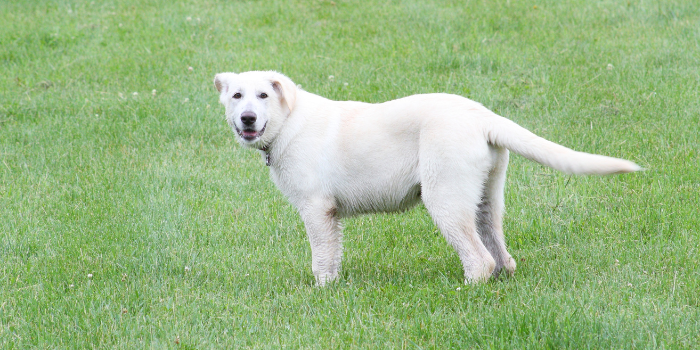
|
|
Larry’s been too happy: The unexpected downsides of a wagging tail
|
| |
Larry the labrador and his owner Otis had enjoyed a big autumn weekend at the family farm. As usual, Larry had the time of his life trying to keep up with the two working kelpies and then paddling happily around in the river afterwards.
The next day, however, Larry wasn’t so cheery. The dog seemed subdued and reluctant to move out of his bed. When Otis offered him breakfast (which usually fixed any issue for Larry), Larry yelped and cowered down.
Remembering that labradors are prone to joint issues like hip dysplasia, Otis phoned his local veterinary hospital to ask for advice. Given Larry seemed so out of sorts, the nurse recommended booking the dog in for a veterinary assessment later that morning.
At the appointment, the vet performed a thorough physical examination of Larry. Whilst Larry seemed very reluctant to be touched around his back end, he showed no signs of limping, and had a normal range of motion in all his joints. The vet did notice, however, that Larry seemed to be holding his tail down very low, as opposed to his usual constant wag.
On gentle palpation of the area around his tail base, Larry yelped and jumped away. Given the dog hadn’t suffered any obvious trauma in this area, the vet diagnosed him with likely Limber tail syndrome (LTS). LTS is a condition seen mostly in hunting dogs, involving acute swelling and pain in the tail-base region. It usually occurs due to overexertion of the tail, particularly in colder conditions.
TL;DR: Larry had wagged too much!
Larry was prescribed a course of anti-inflammatory pain relief, and a period of rest and restricted exercise. Within five days, he seemed back to normal, as indicated by the return of his usual vigorous wag and wiggle (despite Otis’s attempts to enforce rest).
If your pet shows any signs of sudden pain or lameness, please don’t hesitate to consult our helpful team. Like Larry, we’re always happy to help! |
|
|
This email contains comments of a general nature only and is not intended to be a substitute for professional veterinary advice. It should not be relied on as the basis for whether you do or don't do anything.
All content © PetPack 2023 |
|
|
[Footer]
|